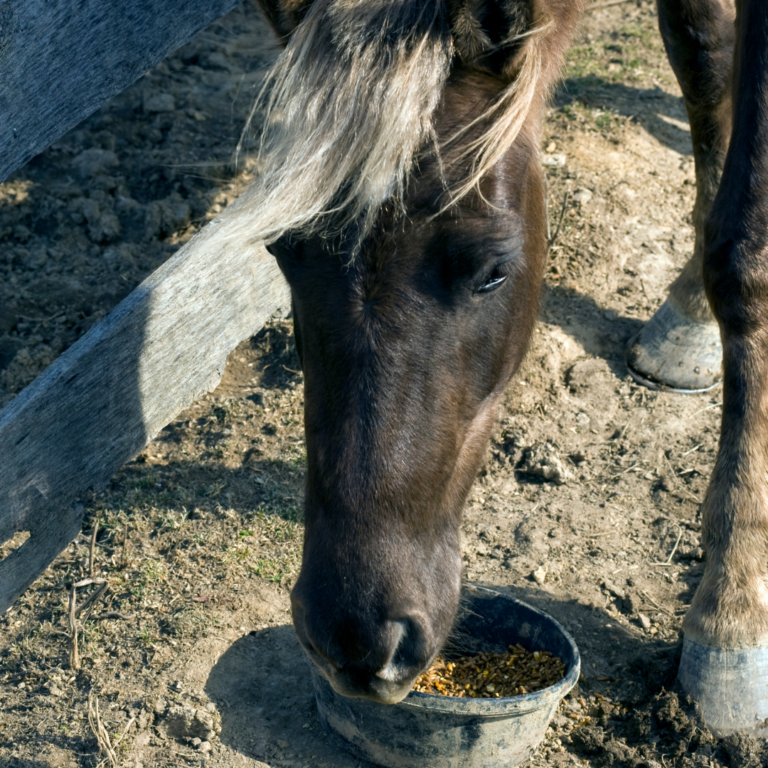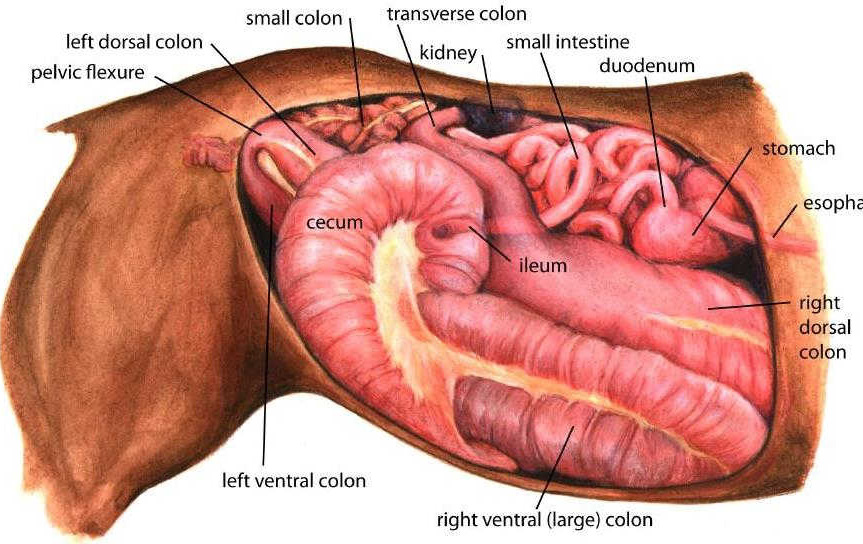Sponsored by KER
Has your horse decided that gobbling his grain is no longer as fun as it once was? Has he slowed his eating so much that he requires hours to finish a meal he once would devour in mere minutes?
Horses lose their appetite for a variety of reasons. One lesser-known cause is gastrointestinal discomfort emanating from gastric ulcers and hindgut acidosis.
Signs horses may be affected by ulcers or hindgut acidosis
Researchers have documented the pervasiveness of gastric ulcers among horses. Because of this, many horses, especially those in performance careers, are monitored closely for gastric discomfort, which typically manifests as loss of appetite, teeth-grinding, dull coat, and changes in disposition. Similarly, more and more horses are being diagnosed with hindgut acidosis, a pH imbalance that specifically affects the cecum and colon. These horses tend to have loose or inconsistent manure, occasional colic, and stereotypic behaviors such as wood-chewing and stall-walking.
Diagnosing the condition
Diagnosing gastric ulcers can be achieved through endoscopic evaluation of the stomach. If found, ulcers can be treated with prescription-strength omeprazole, which must be purchased through a veterinarian. Once a follow-up endoscopy reveals an ulcer-free stomach, a research-proven supplement can be used to keep ulcers from reforming.
Definitively diagnosing hindgut acidosis is more complex, as an endoscope cannot be threaded into the cecum or colon. Diagnosis is usually based on the aforementioned clinical signs, and clearing of acidosis depends on moderating the pH with a nutritional buffer.
Can horses be affected by both gastric ulcers and hindgut acidosis at the same time?
Yes, many horses have both problems simultaneously.
Treatment options and ongoing support
A product that addresses both gastric ulcers and hindgut acidosis is the best choice. RiteTrac, developed by the scientists at Kentucky Equine Research (KER), contains ingredients that keep ulcers from forming through stabilisation of pH and through protectively coating the stomach wall, and keep hindgut acidosis at bay through time-released buffering. Twice-a-day feeding of RiteTrac will help maintain the health of the gastrointestinal tract, and once the discomfort subsides, appetite will likely return to normal. In Australia, look for EquiShure or Neigh-Lox.
Horses involved in heavy exercise may also benefit from Triacton, another product formulated by KER. Triacton provides three research-proven benefits to horses: increased bone density, improved gastric health, and enhanced hindgut stability. Triacton can be fed with RiteTrac to provide horses with ultimate gastrointestinal and skeletal support.




